You won't find anything in Ireland - enchanted islands, Star Wars filming locations, and even a whole wallaby settlement! 
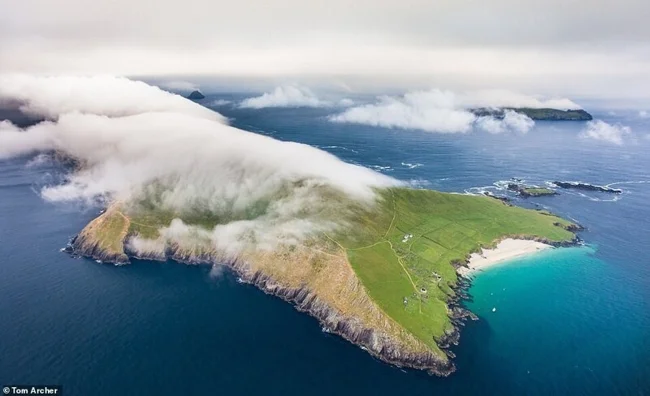
A stunning aerial image shows Great Blasket in County Kerry, one of the six main islands that make up the Blasket archipelago. The outcrop, 6.4 kilometers long and 0.8 kilometers wide, claims to be the westernmost point in Europe. The Blasket Islands have been inhabited for many centuries, probably since the Iron Age. During the First World War the population of Great Blasket was about 160 people, but it soon declined and the island was finally abandoned in 1953. Today, the Great Blasket is a popular day trip destination, where people explore the white sand beach called Tra Ban, which translates to "White Stripe", hiking trails and plenty of wildlife, from basking sharks to puffins. Visitors can explore an abandoned fishing village on the island and stay in cottages that have been restored and converted into housing. Manuel S. reviewed on Tripadvisor after visiting the Great Blasket in 2019: “Silence, donkeys, seals and rocks. Every minute seems like an hour. The perfect place to breathe and be happy!” 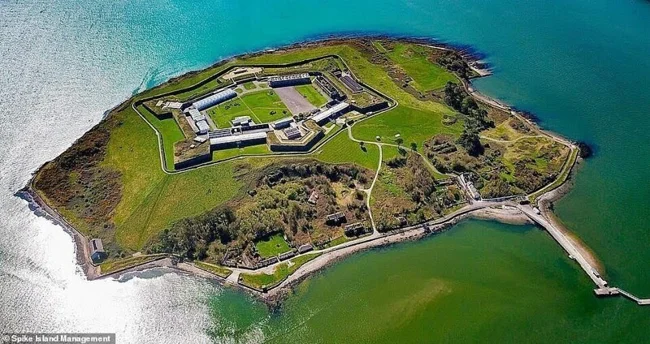
Spike Island, off the coast of Cork, nicknamed "Irish Alcatraz," boasts a fascinating and dark history that includes "monks and monasteries, rebels and redcoats, captains and convicts, sinners and saints," the island's website notes. The island's star-shaped fortress, Fort Mitchell, dates back to 1804 and was once the largest prison in the world, housing up to 2,300 prisoners. It ceased to function as a prison in 2004, and tourists replaced the convicts. The island was voted Europe's leading tourist attraction at the 2017 World Travel Awards. Visitors can explore the convict cemetery, 19th-century prison cells and island village houses, some of which date back to the 1700s. 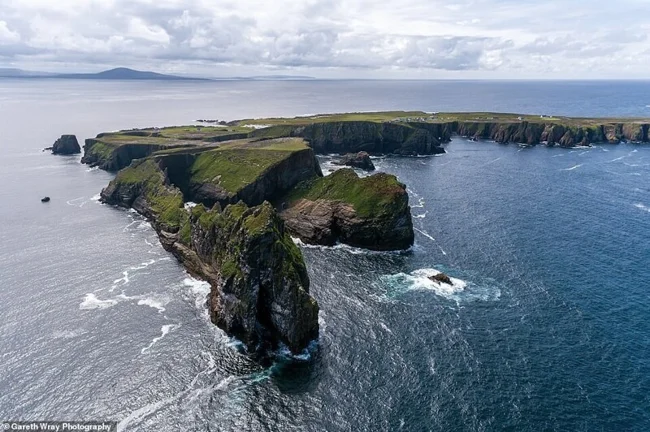
The Irish Tourist Board says Tory Island, also known as Toray, 12 kilometers off the north-west coast of County Donegal, is "Ireland's most remote inhabited island". This remoteness led to the continuation of many traditions and customs, including the appointment of an "island king". The title was last held by Patsy Dan Rogers, who died in 2018 at the age of 74, and since then no one has ruled. The rocky outcrop features a T-shaped cross known as the Tau cross, the ruins of the 6th-century monastery of St Colmcille, a lighthouse and the fort of Dun Baloir. Visit between March and September and you'll be able to spot puffins nesting on the coast, the tourism board adds. Tory Island can be reached by passenger ferry, which departs from Magheroarti Pier on the mainland and takes approximately 45 minutes. 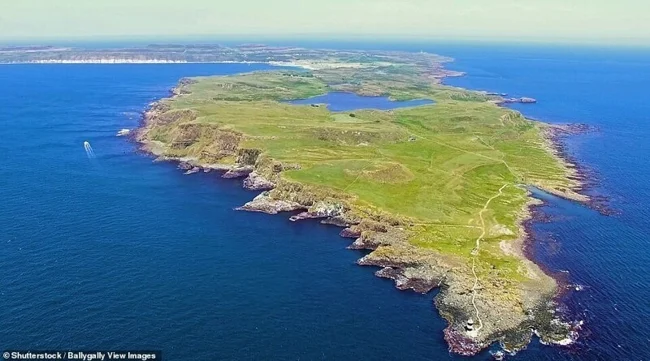
Rathlin is an L-shaped island measuring 9.6 kilometers long and 1.6 kilometers wide off the north-east coast of Ireland. According to the island's website, Rathlin, which has around 140 residents, was "probably the first Irish island to become inhabited". The first settlers are believed to have arrived here sometime between 6000–5000 BC from Scotland. Head to the island to check out its famous "upside down" lighthouse - the lighthouse sits at the base of the building rather than at the top to cut through the low fog. The island is also home to a huge colony of seabirds, and puffins can be seen here in early summer. Its famous visitors have included Robert the Bruce, who took refuge on the island in 1306 during his bid for the Scottish crown, and Sir Richard Branson, who crash-landed off the coast in 1987 during his record-breaking Atlantic crossing in a hot air balloon. 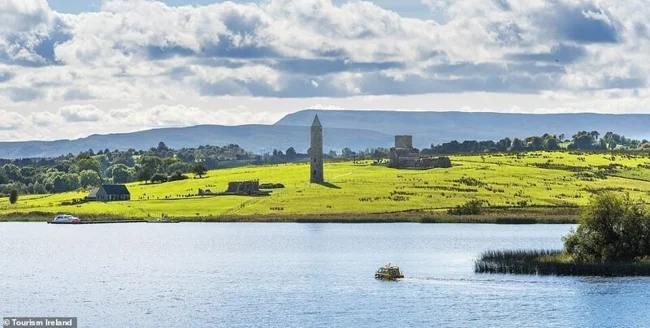
You'll find Devenish Island in Lower Lough Erne, one of a pair of connected lochs near the town of Enniskillen in County Fermanagh. It is one of 154 islands in the lakes. Founded by the Irish Saint Maulise of Leighlin in the 6th century, the monastery is today home to a ruined Augustinian abbey. Visitors can climb to the top of the famous 30m-tall round tower and "admire spectacular views", reports Enniskillen.com. The island's buildings are decorated with "beautifully carved intricate details", the website adds, while Discover Northern Ireland notes that "remnants of the island's early history remain hidden beneath your feet". 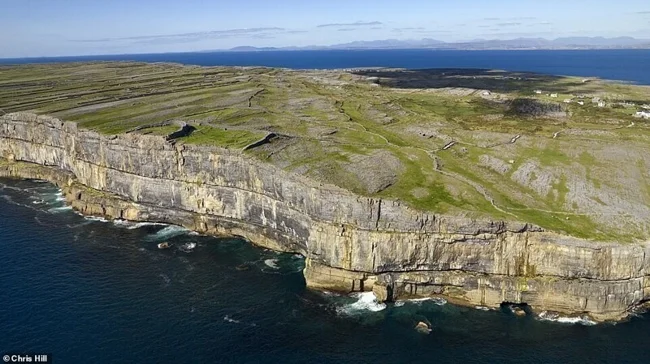
Inis Mór, or Great Island, is one of a group of three islands in Galway Bay, along with Inis Máin (Middle Island) and Inis Oirr (East Island), “known for their wild landscapes, distinctive knitted jumpers,” explains the Irish tourism board. The islands have ruins dating back to the Bronze Age. Inis Mór, the largest of the three, is covered by kilometers of stone walls with massive cliffs on the western side. The waters around the island also boast a thriving colony of seals, wild swans, ducks and rare birds. The inhabitants of each of the Aran Islands speak Irish and English. Year after year, visitors make the pilgrimage to experience the islands' nightlife, with pubs on the islands popular for musical performances, including traditional Sean Nos singing. 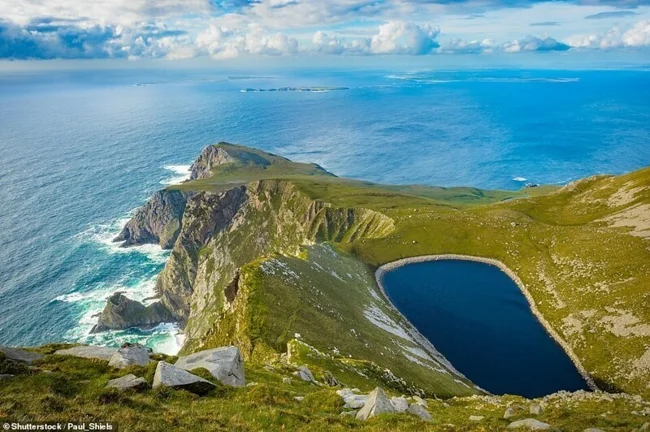
Pictured is the spectacular Lake Bunnafreva on the western side of Achill Island, which is connected to the County Mayo mainland via the Michael Davitt Bridge, built in 2008. The island, which is the largest in Ireland, has been inhabited by people. about 5000 years ago. It boasts megalithic tombs and headland forts that are yet to be explored. Today the island, with a population of about 2,500, is also home to a wealth of wildlife, including rare birds such as the jackdaw, golden plover and gyrfalcon, the official tourism website says. Other notable residents include German writer and Nobel Prize winner in literature Heinrich Böll, who once had a cottage on Achill Island. His literary retreat, located on the outskirts of the village of Dugort on the north side of the island, is now inviting artists and writers to apply for a two-week residency “to focus fully on their work and use Achilles as a source of inspiration,” says heinrichboellcottage.com. 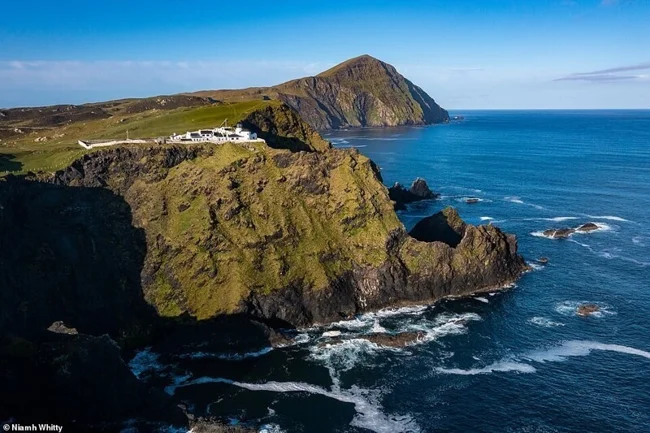
Take a 25-minute ferry ride from Runa Pier, about two hours from Galway, to Clare Island and there's a good chance you'll be accompanied by a pod of dolphins, reports clareisland.ie. Situated 5.6 km off the west coast of County Mayo, the island has its highest point, the 462 meter high Knockmore Peak on its north-western edge. Elsewhere, the island's beautiful Blue Flag beach "provides the perfect playground for children", the island's website says, and its sea cliffs are described as some of the "most impressive on the west coast". The 16th-century fortress of Grace O'Malley, famed as the "Pirate Queen" of Ireland, is located on the east coast of the island. 
The name "Skellig" comes from the old Irish word sceillec, meaning "shard of stone", says bigseventravel - a fitting name for these seemingly uninhabited pointy islands. There are two Skellig islands: Little Skellig, which is inaccessible, and Skellig Michael, home to a UNESCO World Heritage monastery founded in the 6th century, ireland.com reports. The weathered outcrop has been used as a filming location for two Star Wars films, 2015's The Force Awakens and 2017's The Last Jedi. In a letter to a friend, Irish playwright George Bernard Shaw called Skellig Michael "the most fantastic and incredible rock in the world." He added: “This thing does not belong to any world in which you and I have lived and worked: it is part of our dream world.” 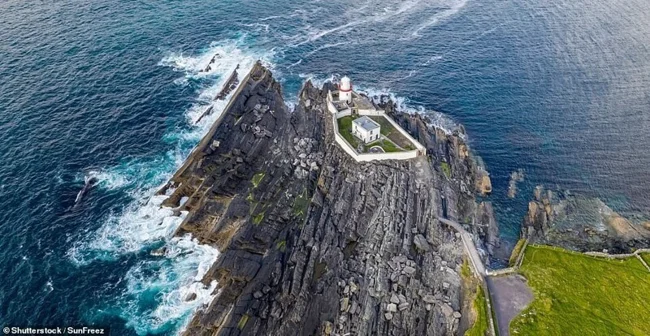
Valentia Island, off the southwest coast of County Kerry, is home to the world's first transatlantic cable. The first telegraph cable was laid in 1858 to send messages to and from Trinity Bay in Newfoundland, Canada. The first message arrived in 67 minutes. Before its implementation, messages from Europe to North America were delivered in two weeks, according to the island’s official website. However, the cable's success was short-lived - a new, more efficient cable was subsequently installed in 1866 and used for the next century. Elsewhere on the island is Ireland's westerliest lighthouse (pictured), housed in a 19th-century lighthouse building that is now open to the public. Valentia Island, with a population of around 600 people, can be reached via the Maurice O'Neill Memorial Bridge from Porthmagee and the nearest railway station is in Killarney. 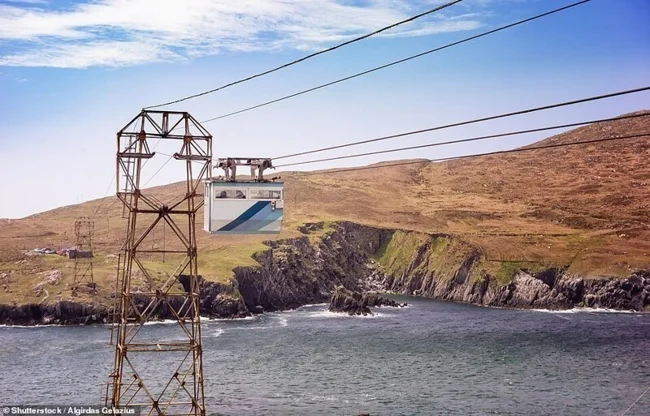
With a permanent population of about six people and no shops or restaurants, Dursey Island, located on the southwestern tip of the Beara Peninsula, is popular with people who want to get away from the world. Visitors will enjoy wildlife sightings - the island's website states: "Dolphins and whales regularly visit the rich waters surrounding Dursey, in addition to a wide range of different species of seabirds and butterflies." Moreover, the island is home to Ireland's only cable car, which is the only cable car in all of Europe to cross open sea waters. 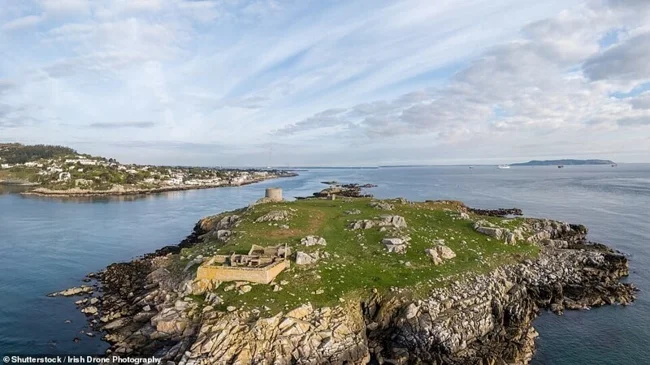
Described as an "ideal" day trip by visitdublin.com and located just 15km from Dublin, the uninhabited island of Dalkey is one of the most accessible islands on this list. Its Gaelic name "Daleginis" means "Isle of Thorns". According to Irishroadtrip.com, it was home to the first Stone Age settlers on the east coast of Ireland. “There is evidence that it was inhabited around the 4th millennium BC,” the guide adds. Steeped in history, this island contains the remains of a cape fortress and the ruins of a 7th-century church. Take a kayaking tour from the mainland to the tip of the island, or take the ferry with ferryman Ken from Collymore Harbour, a 45-minute bus ride from Dublin city centre. 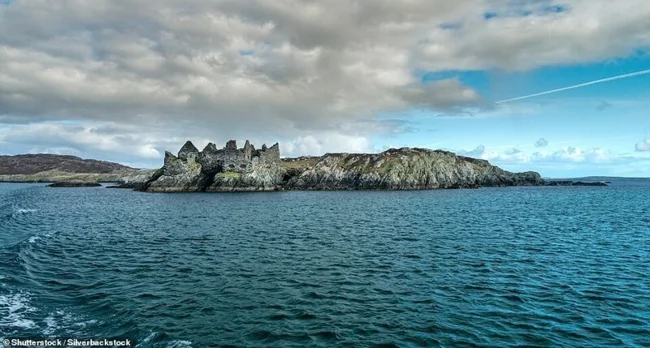
These days, this small island 11km off the Galway coast is popular for its walking trails, award-winning sandy beaches and exciting diving, but its rich history is also worth exploring. It is estimated that Inishbofin was inhabited as early as 4000 BC. One of the most visited attractions is the 16th-century Oliver Cromwell Barracks, a reminder of a particularly dark period in Irish history. Galwaytourism explains: "During the terrible years of Cromwell's campaigns, Inishbofin was turned into a penal colony for Catholic clergy, and terrible atrocities were committed on the unfortunate clergy." The island now boasts a busy calendar of events with festivals and traditional Irish music, and a number of hostels, hotels and campsites offer a wide range of accommodation. 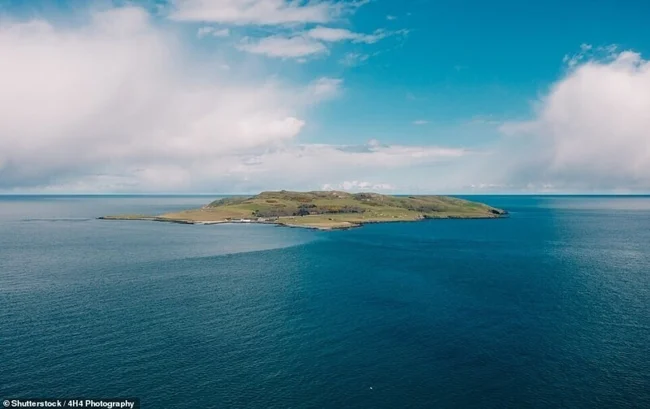
The largest island off the east coast of Ireland, Lambay is privately owned by the Baring family and access is limited to visitors who have booked one of the pre-arranged tours. The island is formed from a beautiful green speckled stone called porphyry, which Neolithic people used to make “beautifully crafted stone axes.” The fully self-sufficient island is partially powered by solar and wind energy, with the goal of becoming completely self-sufficient, the website says. The island is also home to the Lambay whiskey distillery, and the microclimate is “ideal for barrel aging,” says Lambay Whiskey. Lambay is also home to a group of wallabies that first settled on the island in the 1950s. 
Covering 18 square kilometers, Arranmore is the second largest inhabited island off the coast of Ireland and the largest of the Donegal islands. “Wild and untamed, the island has a rich and vibrant heritage and culture and has been inhabited since prehistoric times,” says Arainnmhor.com. In 2019, after the island introduced high-speed internet, the island's website published an open letter to the US and Australia to attract new residents as its population fell to a record low of 469 people. The letter read: "You will have the best diving in Ireland and the best seafood. There are fewer people here than can fit in a couple of tube cars, but enough musicians and good Irish people to keep the party going late into the night." Every year the island hosts the Swell Fest music and art festival. Additionally, visitors can rent electric bikes to enjoy the island's gems, according to a local tourism website. “The island's freshwater lakes are an angler's paradise for catching brown and rainbow trout,” he adds. 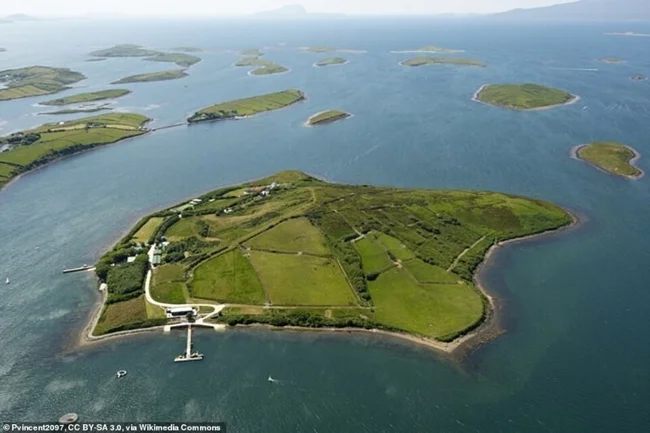
Situated 9 km off the west coast of Mayo, this small inhabited island should not be confused with South Inishturk, which is located in County Galway. Inishturk Beg, whose name means "Wild Boar Island" in Irish, boasts a landscape of sheer cliffs and steep hills, with a coastline replete with pristine beaches and stunning views. Tranaun Beach in the west of the island has been awarded a Green Coastal Flag for its excellent bathing water quality and pristine natural environment. Visitors can explore the ruins of a Napoleonic signal tower on the cliff top, 210m above sea level. According to local folklore, the fort at Portdun on the south side of the island was built by pirates who hid their galleys in the river. 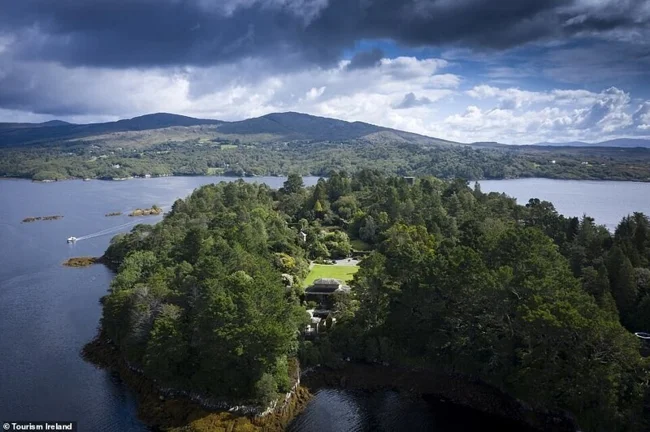
Situated on Glengarriff Harbor on Bantry Bay, this hidden gem is a gardeners delight. The island was owned in the early 1900s by Annan and Violet Bryce, who commissioned landscape architect Harold Peto to transform the relatively barren rocky outcrop into one of Europe's most famous gardens, also known as Ilnacullin Gardens. “Pathways wind around the landscape, leading you to a number of charming garden buildings such as a Greek temple, a clock tower, a casita and the original Martello Tower,” says the island's website. The island has attracted famous visitors over the years - George Bernard Shaw is said to have once compared it to "paradise", and writer Agatha Christie signed the island's guest book in 1959.
0 comments
